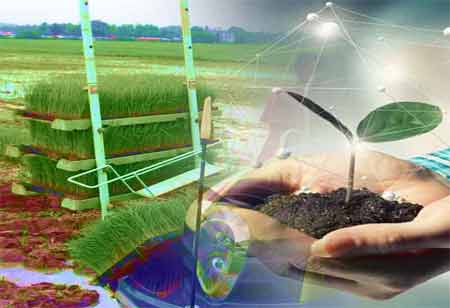Thank you for Subscribing to Agri Business Review Weekly Brief
Role Of AgTech For Future Growth
The requirement for innovation in Agtech is more powerful than ever before.

By
Agri Business Review | Monday, November 21, 2022
Stay ahead of the industry with exclusive feature stories on the top companies, expert insights and the latest news delivered straight to your inbox. Subscribe today.
Technological agricultural reforms are important to guarantee the yield curve per acre remains to rise to make countries self-reliant.
Fremont, CA: The requirement for innovation in Agtech is more powerful than ever before. Some pressing reasons for this include the increasing demand for food, deficiency of available land and increasing GHG emissions. Moreover, cold-weather countries have a circumscribed growing season of around 120 frost-free days every year, making it crucial to use technology to improve the farming supply chain.
Technological agricultural reforms are thereby important to guarantee the yield curve per acre remains to rise to make countries self-reliant.
What is AgTech?
Agricultural Technology or AgriTech or AgTech is the application of Technology to constantly produce more with less by making Farming more efficient from the field to the supply chain. The more advanced technologies in this field currently support the 'fourth agricultural revolution' and are remodeling the agri-food sector globally.
Some popular technologies that are rising efficiencies in the food chain are vertical or urban Farming, genetic revision of seeds, cultivated flesh and crowd farming.
Some categories under AgTech involve smart Farming, digital agriculture, and precision agriculture. The principal technologies across these categories incorporate drone technology, sensors, the Internet of Things, nanotechnology, data analytics, Artificial Intelligence, blockchain, and so on.
Precision Agriculture
By measuring the requirements of individual crops and fields, the precision agriculture process concentrates on 'optimization' and 'precision,' causing saving costs, reduced wastage and decreased environmental impact. In addition, it allows farmers to identify differences in biological, chemical and physical environments and uniformly provide necessary treatment and nutrition.
Smart Farming
Smart Farming employs information and data technologies to improve complex farming systems. It concentrates on producing the utmost yields from the same land but with lesser investment.
Smart Farming involves not only farm machinery but all farm operations, comprising terrain, weather, manpower, etc. Diverse from precision farming, smart Farming concentrates not on specifics but on collecting, analyzing, and applying data to guarantee it is used smartly for the best results. Real-time data is gathered from several sources, and farmers are entitled to make informed decisions based on this combined data.
Digital Agriculture
Digital Agriculture or Digital Farming is "the employment of big data and precision tech systems in agriculture." It is an inclusion of precision agriculture and smart Farming. It includes creating and forming value from data gathered with actionable intelligence.
This also incorporates other digital transformation trends such as IoT and sensors in the field and equipment, Farming and robotics, drones and crop monitoring, Radiofrequency Identification (RFID) sensors ad trailing and machine learning and analytics. As a result, digital agriculture allows enhanced productivity, reduced risks and long-term cost-effectiveness.
Challenges and Opportunities for AgTech
While AgTech has followed in pockets of success across the country,
Here are some of the opportunities and challenges of AgTech adoption:
Challenges
• Some regions deficit the required connectivity infrastructure to smoothly use agricultural Technology.
• There is an evident lack of trust in the introduced technologies, as their impact has not been sufficiently proven.
• The cost vs. value of agtech is not useful until data and results can be precisely interpreted and effectively utilized.
• The labor shortage is another critical challenge, as workers must have the necessary technical skills to handle and use advancing technologies.
• The starting investment in smart farm equipment is very high as the limited level of adoption does not explain high production volumes, and therefore the cost per unit stays high.
Opportunities
• AgTech can allow farms to be more effective and induce more with less.
• Agtech can enhance supply chain relationships between Agri-business and Agri-food.
• There are raised possibilities of frequently obtaining a preferred level of yield.
• Decreased risks and recurrent costs increase profitability in the long run.
• As IoT technologies mature, costs from drones/UAVs to sensors and communication equipment will continually drop, making connected agriculture more available to smaller farms and rural communities.





